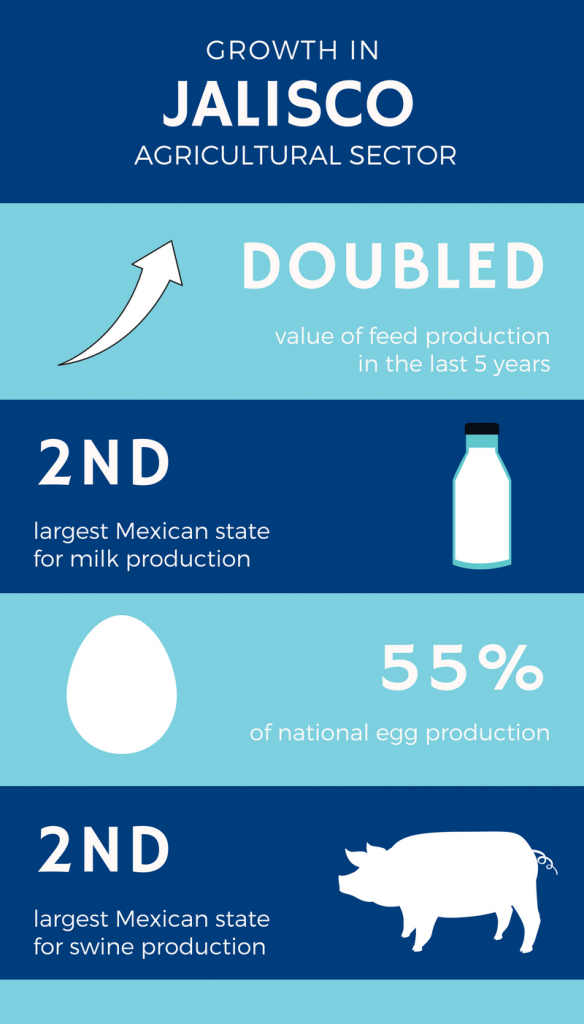Three major associations representing Mexican livestock feeding industries joined forces to promote the feed production sector in Jalisco – an area with growing demand potential for exports. Mexico is the top customer for U.S. coarse grains and co-products, led by U.S. corn exports.
ANFACA, AMEPA and CONAFAB, three national and regional feed production associations that represent nearly all grain demand in the country, recently hosted the National Congress of Feed Production. The U.S. Grains Council (USGC) helped to sponsor the event, the first joint conference between the three organizations to address the integration of the livestock sector in this western Mexican state.
“The Council has a longstanding history with the feed and livestock producers in Jalisco,” said Ryan LeGrand, USGC director in Mexico, who attended the conference along with other members of the USGC Mexico staff. “It was an honor to join them in celebrating their growth during this inaugural event.”
The Mexican state of Jalisco is the country’s main food supplier, emphasizing the importance of supporting the local agricultural and livestock sectors. The Jalisco area has doubled the value of feed production in the last five years, including 55 percent of national egg production, and ranks as the second largest Mexican state in milk production and swine production as well as significant beef production.
The Council has worked to build bridges between these growing sectors and U.S. farmers and agribusinesses by making in-person visits and conducting educational seminars to demonstrate how to incorporate U.S. corn, sorghum and distiller’s dried grains with solubles (DDGS) in the feed rations for the different livestock sectors. Late last year, the Council also added a marketing specialist in Western Mexico to further develop ties.
The National Congress of Feed Production highlighted expansions in infrastructure at the Port of Veracruz. Grupo Gramosa kicked off the presentations discussing the expansion of its terminal at the port. When completed, the expansion will make the terminal one of the largest port terminals in Latin America with an installed capacity to move 95 million metric tons of grain, up from the current 20 million tons. Located strategically on the Mexican rail system, the terminal will be served by two rail companies with the ability to load a unit train of 75 cars in less than eight hours.
The first phase of the expansion, scheduled for completion in March 2019, will increase storage capacity to 100,000 metric tons in addition to adding storage tanks with the capacity to hold 12,600 cubic meters of liquids. Phase two, estimated to begin in 2024, will include construction of five additional bins and flat warehouses to store meals, including DDGS.
“The Jalisco feed production sector continues to grow 3 to 4 percent each year,” LeGrand said. “With these steady growth rates, combined with Mexico’s investment in port infrastructure, Mexico should continue to be a top customer for U.S. coarse grains and co-products.”
Learn more about the Council’s work in Mexico here.
About The U.S. Grains Council
The U.S. Grains Council develops export markets for U.S. barley, corn, sorghum and related products including distiller’s dried grains with solubles (DDGS) and ethanol. With full-time presence in 28 locations, the Council operates programs in more than 50 countries and the European Union. The Council believes exports are vital to global economic development and to U.S. agriculture’s profitability. Detailed information about the Council and its programs is online at www.grains.org.

